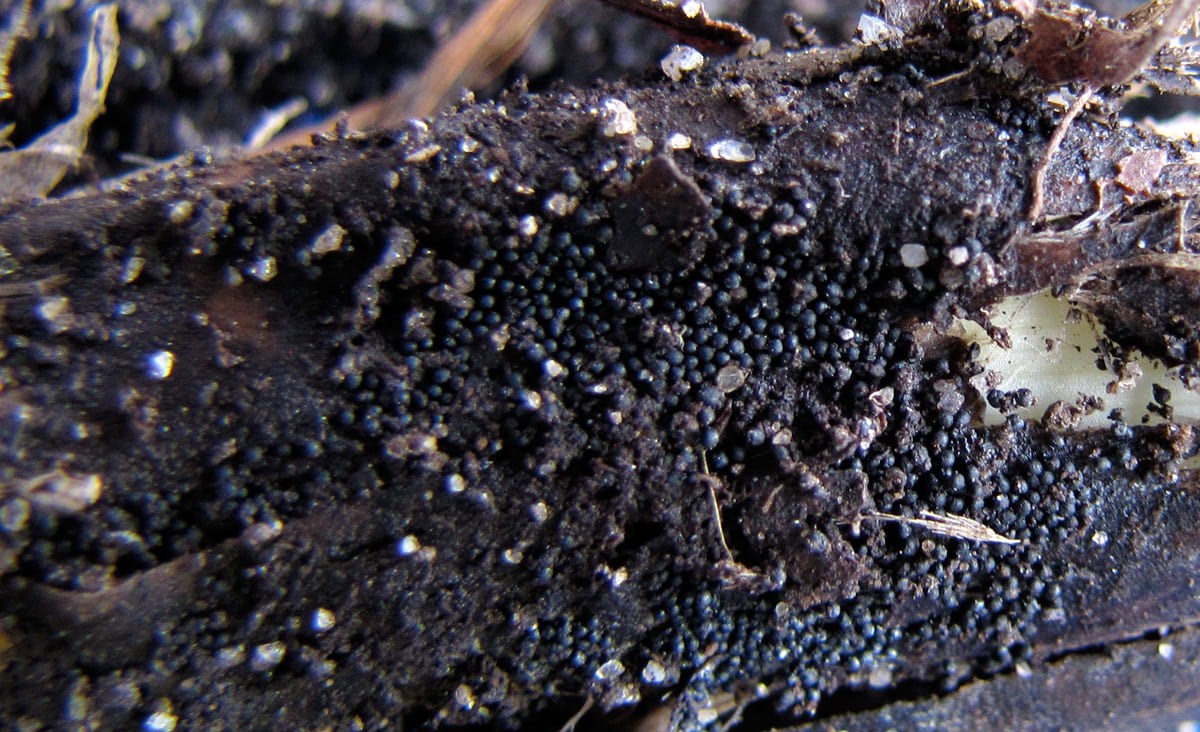These pictures were taken of overwintered garlic from two separate plantings observed to have neck rot in late May.
Onion and shallot are also susceptible. This is one of the major bulb destroying diseases of these crops. Plants can be stunted and unproductive or killed under conditions that favor the disease. Soft rot bacteria can invade diseased bulbs causing them to completely break down.
Neck rot can continue to develop in storage leading to a dry rot of cloves.
Cool, wet conditions are most favorable. Neck rot is also more likely to occur with high plant density, over-irrigation, and excessive nitrogen fertilization. Neck rot is more common on garlic grown in heavy soil types.
The causal fungus, Botrytis porri, usually infects mature plants through the neck tissues or through wounds in the bulbs or leaves, including wounds from topping before harvest. The black, dusty material on the plants in these photographs is this pathogen, primarily its spores (conidia, which are microscopic and dispersible by wind). Tiny black balls can be seen upon close examination of the affected tissue. These are sclerotia, structures produced by the pathogen that will enable it to survive in soil between crops. Sclerotia are brown initially. Another symptom that occurs is bright orange lesions on scapes.
Manage neck rot by removing debris from affected plants when possible, planting pathogen-free cloves, separating susceptible crops, controlling volunteer leeks and garlic, rotating land where garlic is grown, and avoiding favorable conditions, in particular excess moisture and excessive fertilization, especially near harvest time. Minimize damage to leaves and bulbs, including during harvest. Harvest only when mature. Remove necks only when the plants are well cured. Store in cold (less than 40 F), ventilated conditions with low humidity.




